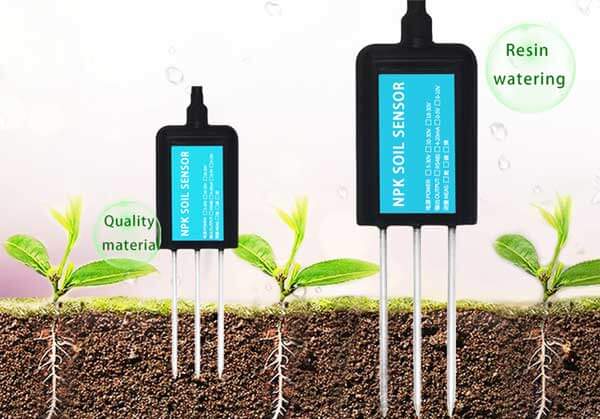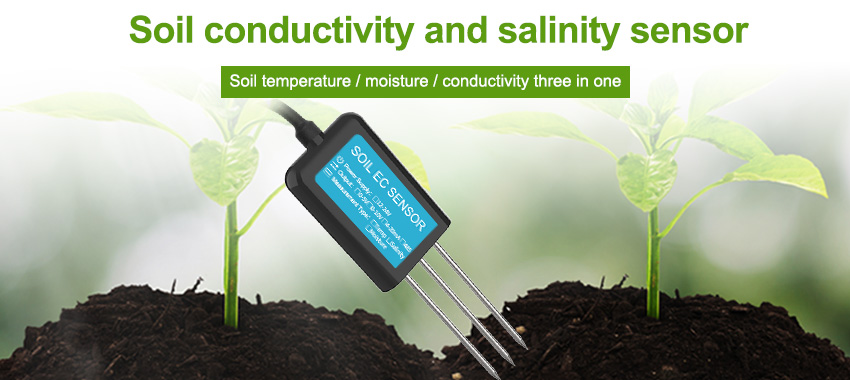Precision agriculture is a farming management system that uses technology to optimize crop production and reduce waste. It involves the use of various tools and techniques to monitor and analyze soil, weather, and crop data in real-time. One of the key components of precision agriculture is soil sensors, which can provide farmers with valuable information about the health and nutrient levels of their soil. In this article, we will explore the potential of soil sensors for crop management and how they can be used to improve agricultural practices.

What are Soil Sensors?
Soil sensors are devices that are used to measure various parameters of the soil, such as moisture, temperature, pH, and nutrient levels. They are typically placed in the soil at different depths, depending on the crop and the type of soil. Soil sensors can be used to monitor soil conditions over time and provide farmers with valuable information about the health of their soil.
Types of Soil Sensors
There are several types of soil sensors available on the market today. Some of the most common types include:
Moisture sensors:
These sensors measure the amount of water in the soil and can help farmers determine when to irrigate their crops.
Temperature sensors:
These sensors measure the temperature of the soil and can help farmers determine when to plant their crops.
pH sensors:
These sensors measure the acidity or alkalinity of the soil and can help farmers determine what types of crops will grow best in their soil.
Nutrient sensors:
These sensors measure the levels of various nutrients in the soil, such as nitrogen, phosphorus, and potassium, and can help farmers determine what types of fertilizers to use.
Benefits of Soil Sensors
Soil sensors offer several benefits to farmers and can help improve agricultural practices in a number of ways. Some of the main benefits of soil sensors include:
Improved crop yields:
Soil sensors can help farmers optimize their crop production by providing them with valuable information about the health and nutrient levels of their soil. This can help farmers make better decisions about when to plant, irrigate, and fertilize their crops, resulting in higher yields.
Reduced waste:
Soil sensors can help farmers reduce waste by providing them with real-time data about the moisture and nutrient levels of their soil. This can help farmers avoid over-irrigation and over-fertilization, which can lead to nutrient runoff and environmental damage.
Increased efficiency:
Soil sensors can help farmers save time and money by providing them with real-time data about their soil conditions. This can help farmers make more informed decisions about when to irrigate and fertilize their crops, reducing the need for manual labor and reducing costs.
Environmental benefits:
Soil sensors can help farmers reduce their environmental impact by reducing the amount of water and fertilizer they use. This can help prevent nutrient runoff and reduce the pollution of waterways and ecosystems.

Challenges of Using Soil Sensors
While soil sensors offer many benefits to farmers, there are also some challenges associated with their use. Some of the main challenges include:
Cost: Soil sensors can be expensive to purchase and install, which can be a barrier for many farmers.
Technical expertise:
Soil sensors require technical expertise to install and maintain, which can be a challenge for farmers who are not familiar with the technology.
Data management:
Soil sensors generate large amounts of data, which can be overwhelming for farmers to manage and analyze.
Calibration: Soil sensors require regular calibration to ensure accurate readings, which can be time-consuming and labor-intensive.
Conclusion
Soil sensors offer a powerful tool for precision agriculture and can help farmers optimize their crop production and reduce waste. While there are some challenges associated with their use, the benefits of soil sensors outweigh the costs and can help improve agricultural practices in a number of ways. As technology continues to advance, soil sensors will become increasingly important for farmers looking to improve their crop yields and reduce their environmental impact.
